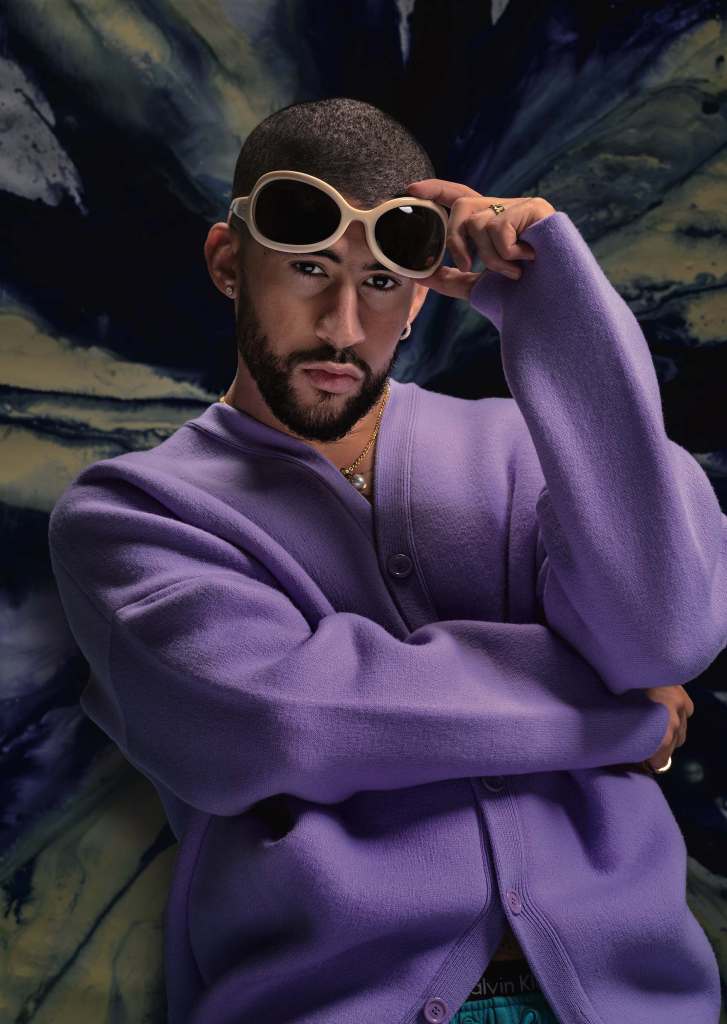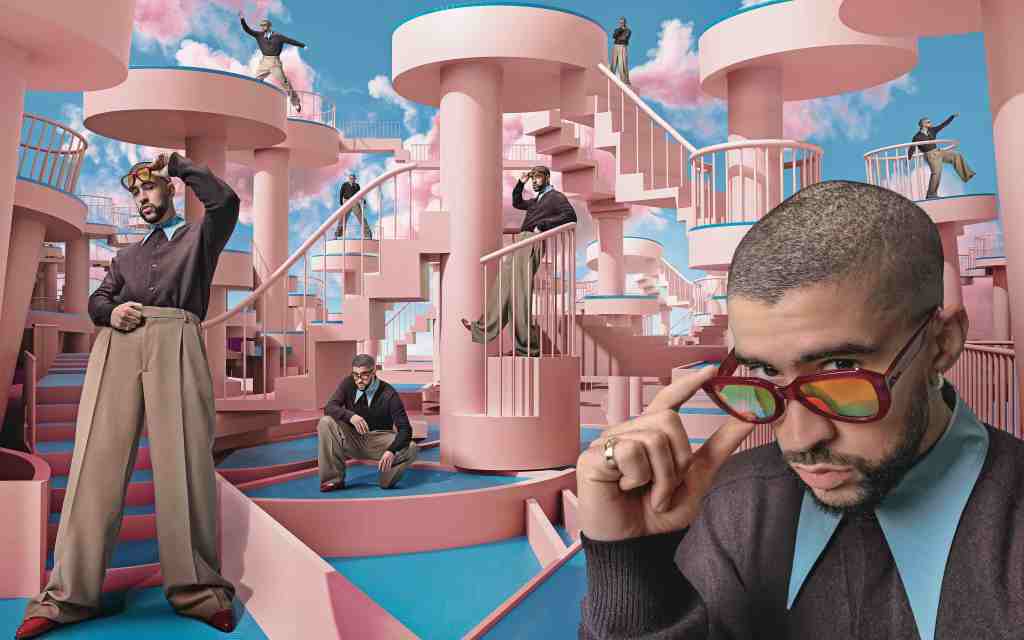The Puerto Rican artist has expertly harnessed the power of music streaming and social media to become one of the most famous musicians on the planet. After partnering with companies like Gucci, Adidas and WWE, he’s wielding his fame to become a global brand.
This story featured in Issue 9 of Forbes Australia. Tap here to secure your copy.

Bad Bunny, born Benito Antonio Martínez Ocasio, is a boundary-defying artist whose previous four studio albums have spanned hip-hop, reggaeton, Latin pop, Puerto Rican trap and Mexican country music.
At a recent concert the crowd embodies that vast spectrum: Hundreds are dressed in the white T-shirts and flat-brimmed blue caps from his recent song “Un Preview.” Others sport the cowboy hats from “Where She Goes.” Many simply wear bunny ears.
“I listened to a lot of salsa on my dad’s side, lots of ballads and merengue on my mom’s side. But being a ’90s kid, reggaeton and rap too,” says Bad Bunny in an interview in his native Spanish. “There’s lots of artists from different genres, countries and times that I feel are within me.”
If there’s one constant about Bad Bunny, who is 29, it’s that whatever he creates becomes a worldwide hit. Over the last three years, the alumnus of the 2019 Forbes 30 Under 30 list has been Spotify’s most-streamed artist, with 35.9 billion plays.
His YouTube channel has attracted more than 32 billion views—more than those of Justin Bieber, Ed Sheeran and, yes, Taylor Swift. He has won three Grammys and 11 Latin Grammys.
In April, he made history as the first Latin artist to headline the Coachella music festival.
And he’s done it all while singing solely in Spanish.
“Spanish is part of me, it’s in my DNA,” he says. “I like speaking it wherever I go—not to force it on people, but because it’s who I am.”
It has made him extremely wealthy. In 2022, Bad Bunny earned an estimated US$88 million (pretax) from world tours, billions of streams and high-profile brand deals with the likes of Adidas and Corona.
That performance was good enough for a debut in the No. 10 spot on Forbes’ Highest-Paid Entertainers list.
“It’s not about the money all the time,” he says about how he picks partners. “It’s about how much I love the brand and how much they’re going to respect my creativity.”
Back in the arena, the audience explodes as Bad Bunny descends from the ceiling, perched atop a Rolls-Royce Silver Shadow.
At that recent show, the musician was wearing a fitted burgundy suit with a white button-down shirt open halfway. His face was covered in a mask reminiscent of Spider- Man’s, but black with glowing red eyes.
“I’m very shy about playing new songs that haven’t been released yet,” he says. He hits play on his iPhone, and the listening party for his album Nadie Sabe lo que va a Pasar Mañana (No One Knows What Will Happen Tomorrow) erupts.
Despite not knowing any of the lyrics, the crowd screams and dances to the new tracks. Bad Bunny doesn’t sing, save for the two songs from the album that he released earlier in the year.
His face remains shrouded until after the clock hits midnight, whereupon he pulls off his mask to reveal his new buzz cut, which, like the new album, pays homage to the early trap-style music that first shot him to global fame.

Bad Bunny is the archetype of a modern pop idol—a truly global artist who harnesses the vast reach of streaming services and social media to deliver what was once regional music to billions of listeners.
“He has a finger on the pulse of culture like no one else,” says Jeremy Erlich, Spotify’s head of music. “He’s dictating what culture becomes.”
Streaming is making the world smaller.
Over the last five years, Spotify has seen a 170% surge in streams of Latin music, a genre that—along with other styles including West African Afrobeats and K-pop—has hooked hundreds of millions of new listeners thanks to viral memes on Instagram and TikTok and streaming services like Spotify, Pandora and Apple Music.
Says Spotify’s Erlich: “The historic Anglo dominance of music is getting broken down at a crazy pace.”
Bad Bunny hasn’t limited himself to music. Last year, he appeared in the Amazon Prime film Cassandro.
In October, 2023, he did double duty as the host and musical guest of Saturday Night Live. A digital version of Bad Bunny is body-slamming opponents in the blockbuster wrestling video game WWE 2k23.
All this in a year that he had declared a time of rest.
His broad appeal allows him to move effortlessly from WWE cage matches to Italian couture. He has appeared in Gucci ads, promoting its high-end Savoy luggage alongside supermodel Kendall Jenner.
In the past he has partnered with Crocs, the cult rubber clog company, dropping a line of glow-in-the-dark shoes in 2020. They quickly sold out.
Also sold out was his latest shoe with Adidas, the $160 “Paso Fino” trainer.
That was Bad Bunny’s 14th sneaker with the German athleticwear firm. Other shoe brands approached him, but only Adidas offered artistic control.
Before he was a worldwide superstar, Bad Bunny was simply Benito, an audiovisual communications student at the University of Puerto Rico at Arecibo. When he wasn’t in class, he bagged groceries at Econo stores and created Latin trap songs he’d upload to SoundCloud.
“He has a finger on the pulse of culture like no one else… He’s dictating what culture becomes.”
Jeremy Erlich, Spotify’s head of music
Everything changed in 2016, when his trap single “Soy Peor” (“I’m Worse”) transformed Bad Bunny into a household name. Full-force fame came with the release of “Diles Remix” the same year.
By 2018 he was collaborating with some of the biggest names in music, including Drake, Cardi B and J Balvin. Just weeks before the Covid-19 lockdowns, he joined Shakira and Jennifer Lopez for the 2020 Super Bowl halftime show in Miami.
During quarantine, he livestreamed on Instagram, where he has 46.8 million followers, and put out his collaboration-filled album Las que no Iban a Salir (The Unreleased).
“[I] can live off music,” he says. But he won’t settle for just that.
There will be more surprising brand partnerships, acting gigs—and, down the road, his own fashion brand. All while never forgetting Puerto Rico.
His native island is central to his image—and his business. In 2021, he became co-owner of the Santurce Cangrejeros, a local pro basketball team.
To support homegrown talent, he has started a sports management agency called Rimas Sports.
He’s building a charity arm, too. In 2018 he created the Good Bunny Foundation, a San Juan nonprofit that supports artistic and sports opportunities to children in Puerto Rico.
It has given away roughly $2 million over the last two years. “In the absence of the government, it is artists that end up fulfilling those roles,” he says.
Whether Bad Bunny has the multidecade staying power of Madonna or Prince remains to be seen. But don’t expect him to spend too much time chilling out poolside at one of his mansions.
He feels his obligation to those millions of fans, online and off. “Fame,” he says, “pushes me to keep working.”



